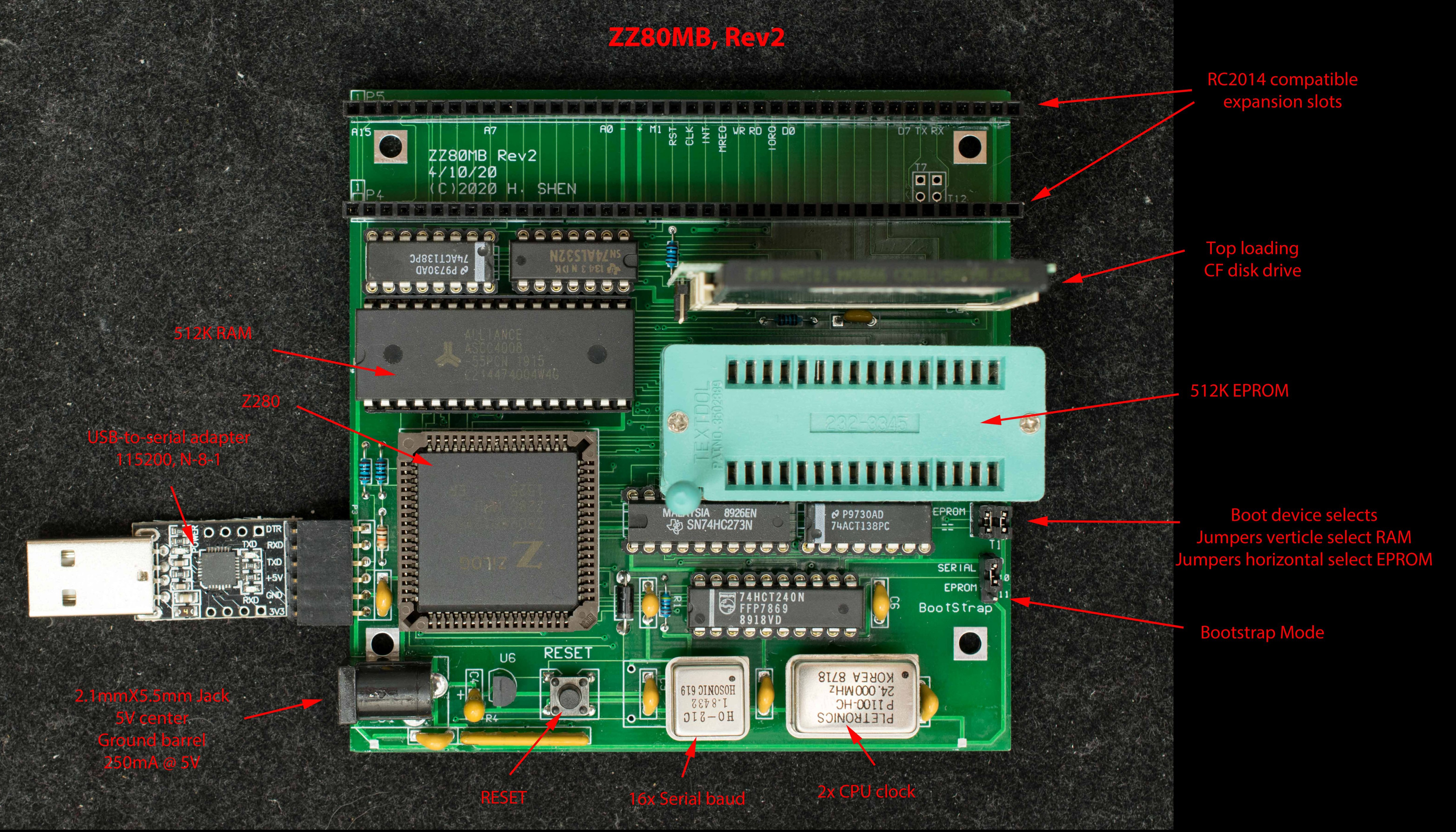Z280 has two modes of operations. In its native mode, it operates with 16-bit data bus and 24-bit of address. Z280 can also operate in Z80-compatible mode where it has a 8-bit data bus with 24-bit address, but only 64K of memory is accessible at any given time. In ZZ80MB Z280 is operating in Z80-compatible mode.
While Z280 was not a commercial success (too slow, too late), it contains many modern CPU features such as MMU, DMA, cache, and on-chip peripherals. One unusual feature of Z280 is its "serial bootstrap" function where it can be configured to boot without ROM through its serial port. With serial bootstrap, it receives 256 bytes of serial data and save them to memory location 0x0 to 0xFF. When the 256th byte has been received, it starts program execution from location 0x0. ZZ80MB utilizes the serial bootstrap function to load an EPROM programmer that can write the subsequent software into on-board EPROM.
Features of ZZ80MB are:
- Z280 CPU configured to Z80-compatible mode running at 24MHz with bus speed of 12 MHz
- 1/2 megabyte of RAM
- 1/2 megabyte of EPROM
- An internal UART at 115200 baud, odd parity, no handshake
- Two modes of operation:
- Serial bootstrap mode, loading file from the serial port,
- EPROM bootstrap mode.
- CP/M 2.2 and CP/M 3 ready
- 44-pin IDE interface for compact flash drive
- Two RC2014 expansion connectors
- Economical 2-layer 102mm X 102mm pc board.

 Plasmode
Plasmode
Discussions
Become a Hackaday.io Member
Create an account to leave a comment. Already have an account? Log In.